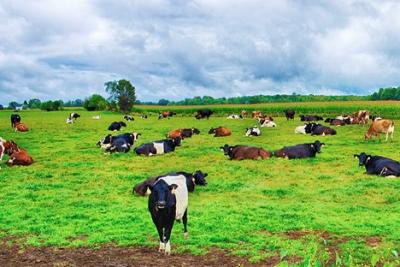Agricultural and Forest Land-Use Change in the Continental United States: Are There Tipping Points?
Land use in the continental U.S. is driven by forces that range from the personal (income growth and changing diets) to the agricultural (yield and productivity changes) to the global (trade policy, population growth, climate change). Land-use changes will ultimately impact indicators of the land’s ability to support humans and other species, including biodiversity, water availability, carbon storage capacity, and ecosystem health. These measures could spike or dip in short order when compounding forces and stressors create tipping points that lead to massive conversions of land from one use to another (e.g. farmland to forest or vice versa). To systematically assess future trends and tipping points in U.S. land use, researchers at the MIT Joint Program on the Science and Policy of Global Change apply a multi-sector dynamics (MSD) model representing the complex, interwoven, dynamic relationships among domestic and global demographics, climate, natural resources, emissions, agriculture markets, and economic systems.
This paper demonstrates how multi-sector dynamics modeling can be used to project future trends and tipping points in a complex physical system by representing the forces that lead to changes in that system, how those forces interact, and how these interactions will likely contribute to systemic changes. This analysis can support decision-making about land-use change and other resource management challenges. It can also provide insights for future MSD modeling research and development.
In a study appearing in the journal iScience, the researchers use MSD to project future U.S. continental land-use change between now and 2050 under three scenarios: business-as-usual, based on conventional analyses of agricultural development over this period; high-pressure, in which combined stressors on land-use are maximized, and low-pressure, in which these stressors are minimized. The MSD-oriented model used in the study—an 18-region, global economic model expanded to include links to natural resources, including energy and land resources—represents the complex, interwoven, dynamic relationships among domestic and global demographics, climate, natural resources, emissions, agriculture markets, and economic systems. Under all three scenarios, the researchers project that over the next three decades, there will likely be no tipping points leading to rapid deforestation or abandonment of agricultural land in the continental U.S. Their projections show that historic trends for this region—small, gradual declines in cropland and increases in grassland and natural forest cover—accelerate under the high-pressure scenario and dissipate under the low-pressure scenario.

